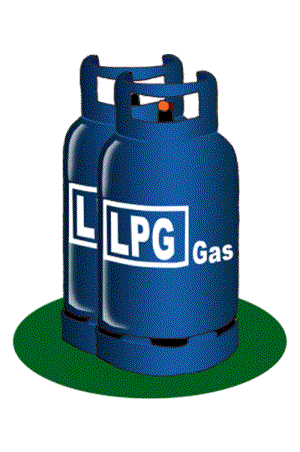
Liquefied petroleum gas or liquid petroleum gas (LPG or LP gas), also referred to as simply propane or butane, is a flammable mixture of hydrocarbon gases used as a fuel in heating appliances, cooking equipment, and vehicles.
It is increasingly used as an aerosol propellant and a refrigerant, replacing chlorofluorocarbons in an effort to reduce damage to the ozone layer. When specifically used as a vehicle fuel it is often referred to as autogas.
Varieties of LPG bought and sold include mixes that are primarily propane (C
3H
8), primarily butane (C
4H
10) and, most commonly, mixes including both propane and butane. In winter, the mixes contain more propane, while in summer, they contain more butane.In the United States, primarily two grades of LPG are sold: commercial propane and HD-5. These specifications are published by the Gas Processors Association (GPA)and the American Society of Testing and Materials (ASTM).[4] Propane/butane blends are also listed in these specifications.
Propylene, butylenes and various other hydrocarbons are usually also present in small concentrations. HD-5 limits the amount of propylene that can be placed in LPG to 5%, and is utilized as an autogas specification. A powerful odorant, ethanethiol, is added so that leaks can be detected easily. The international standard is EN 589. In the United States, tetrahydrothiophene (thiophane) or amyl mercaptan are also approved odorants, although neither is currently being utilized.
Liquefied petroleum gas, or LP gas, is one of the most common alternative fuels used in the world today. In fact, in many places, it isn’t an alternative fuel at all: LP gas is a mainstay for heating and cooking in certain areas of India and some rural areas of the United States. When you cook out at a campground or in your backyard using a gas grill or camping stove, you’re using some form of LP gas. Known for its versatility and efficiency, these days LP gas is looking like an attractive source of energy for people fed up with high heating bills and skyrocketing prices at the gas pump.
Characteristics of LPG
Although gaseous under normal atmospheric conditions, LPG (propane) is stored under modest pressures in liquid form. In this way LPG can be transported and stored in a concentrated form to provide a source of high-energy fuel.
Other characteristics of LPG include:
- A high heating value (“calorific value”)
- A virtual absence of sulphur, leading to cleaner burning
- A consistent quality ensuring reliability, particularly in applications such as gas engines. Examples of specialist applications include forklifts and burners on boilers. LPG is also the perfect choice for cooking, heating and hot water in the home.
